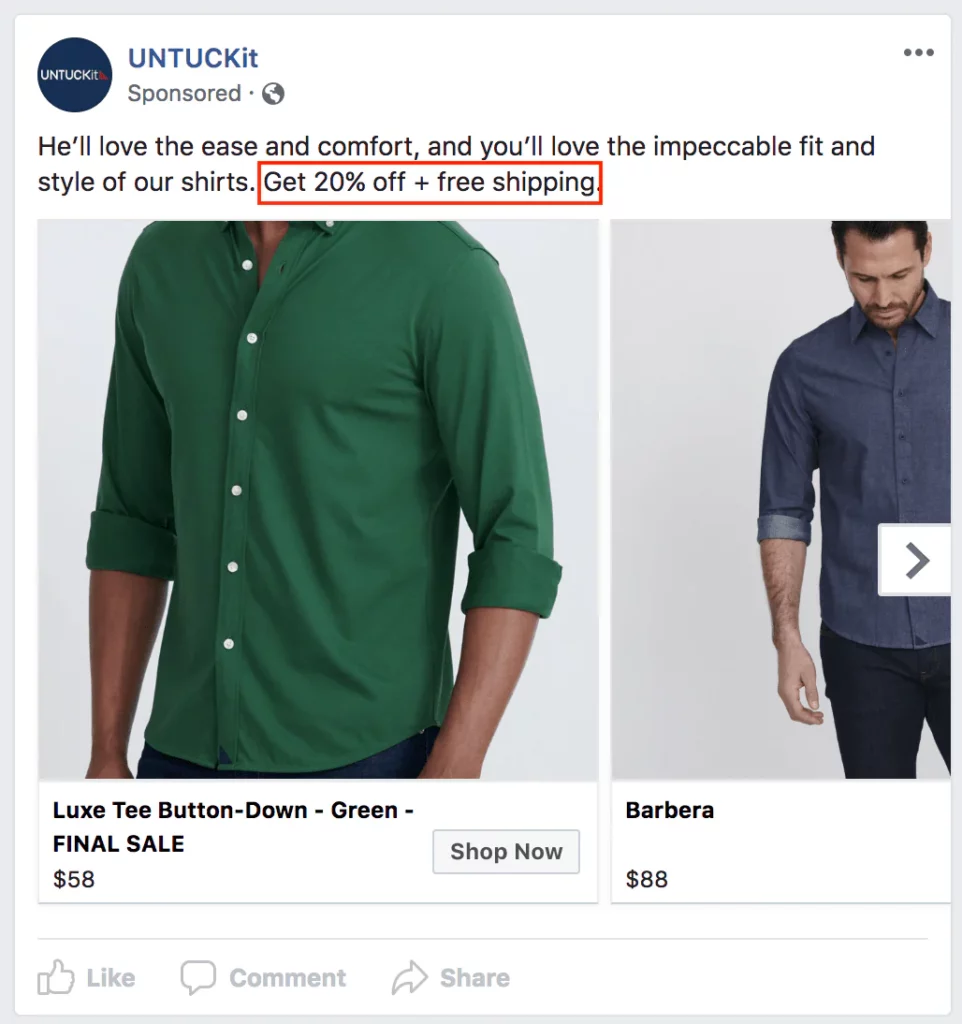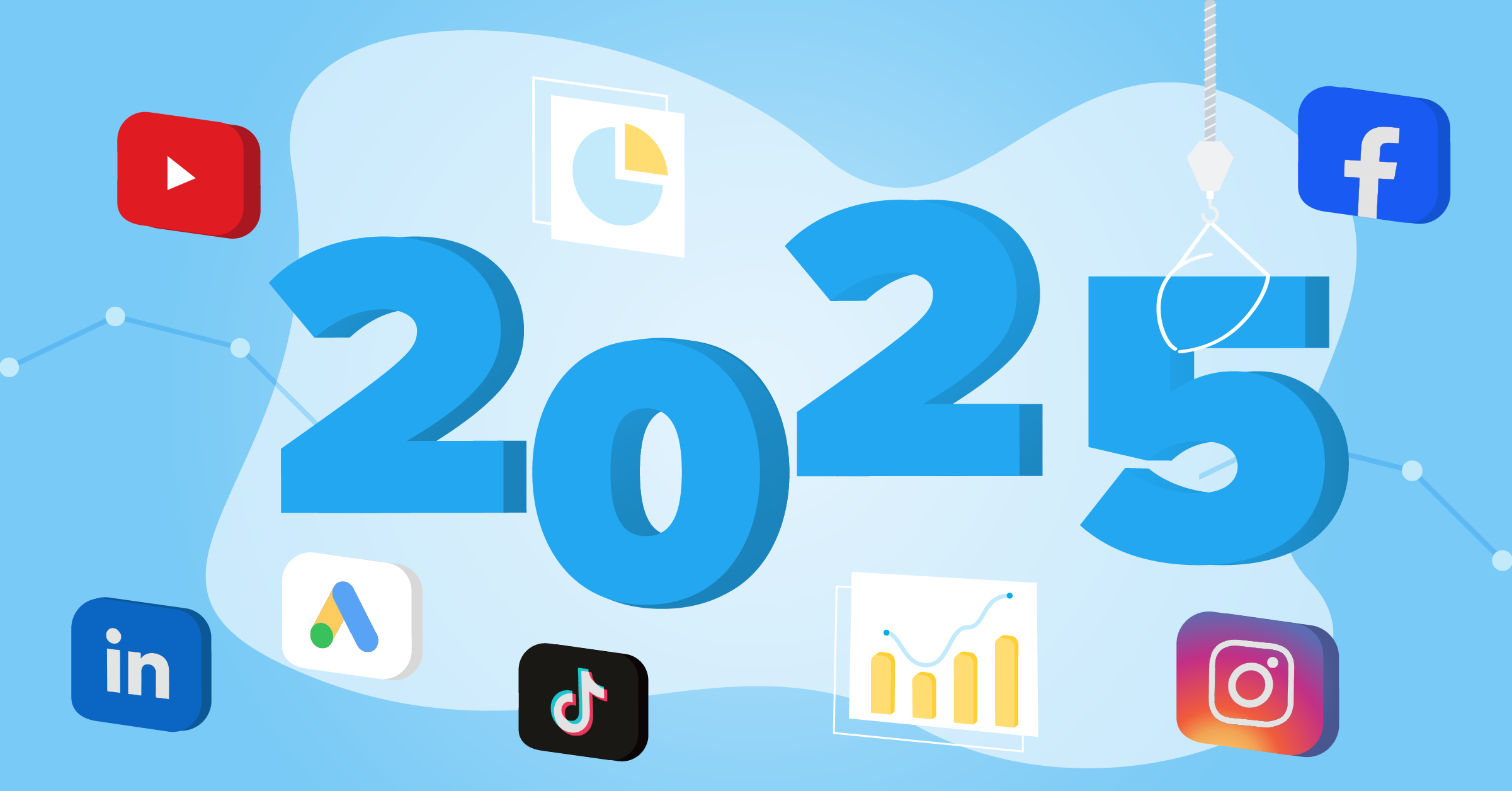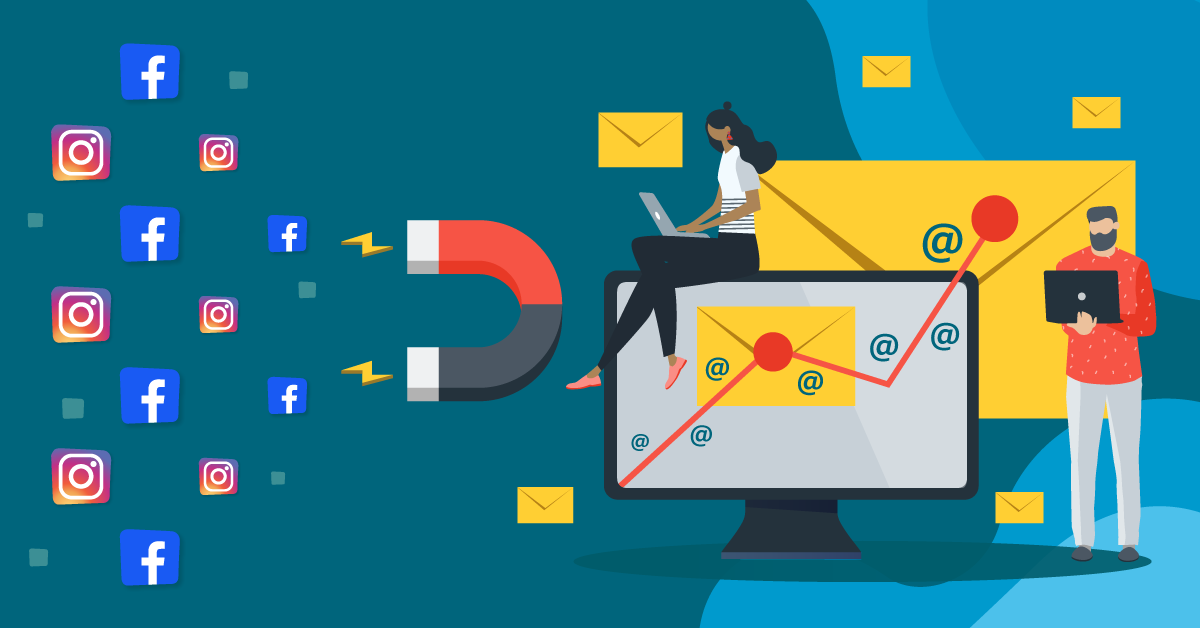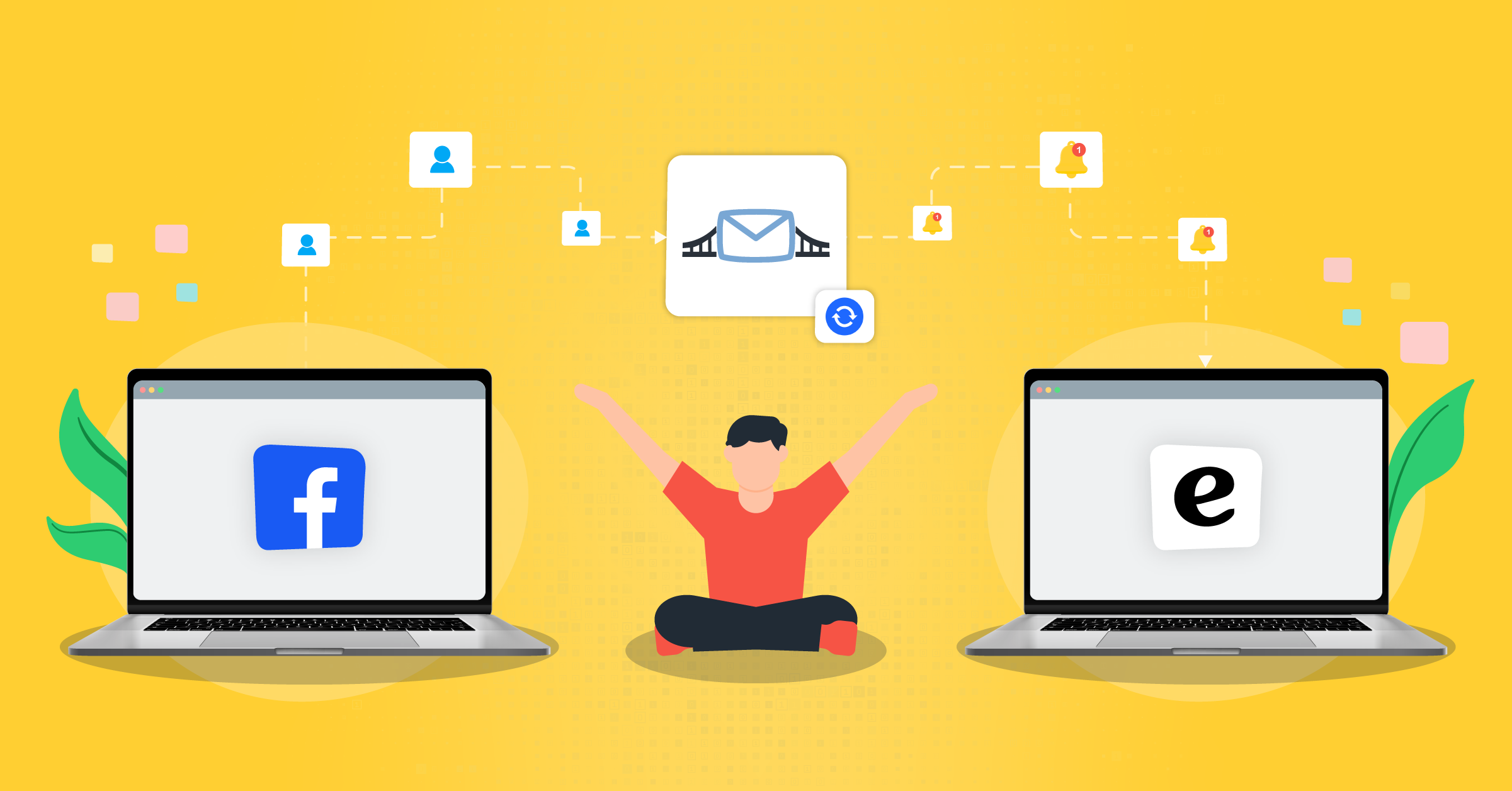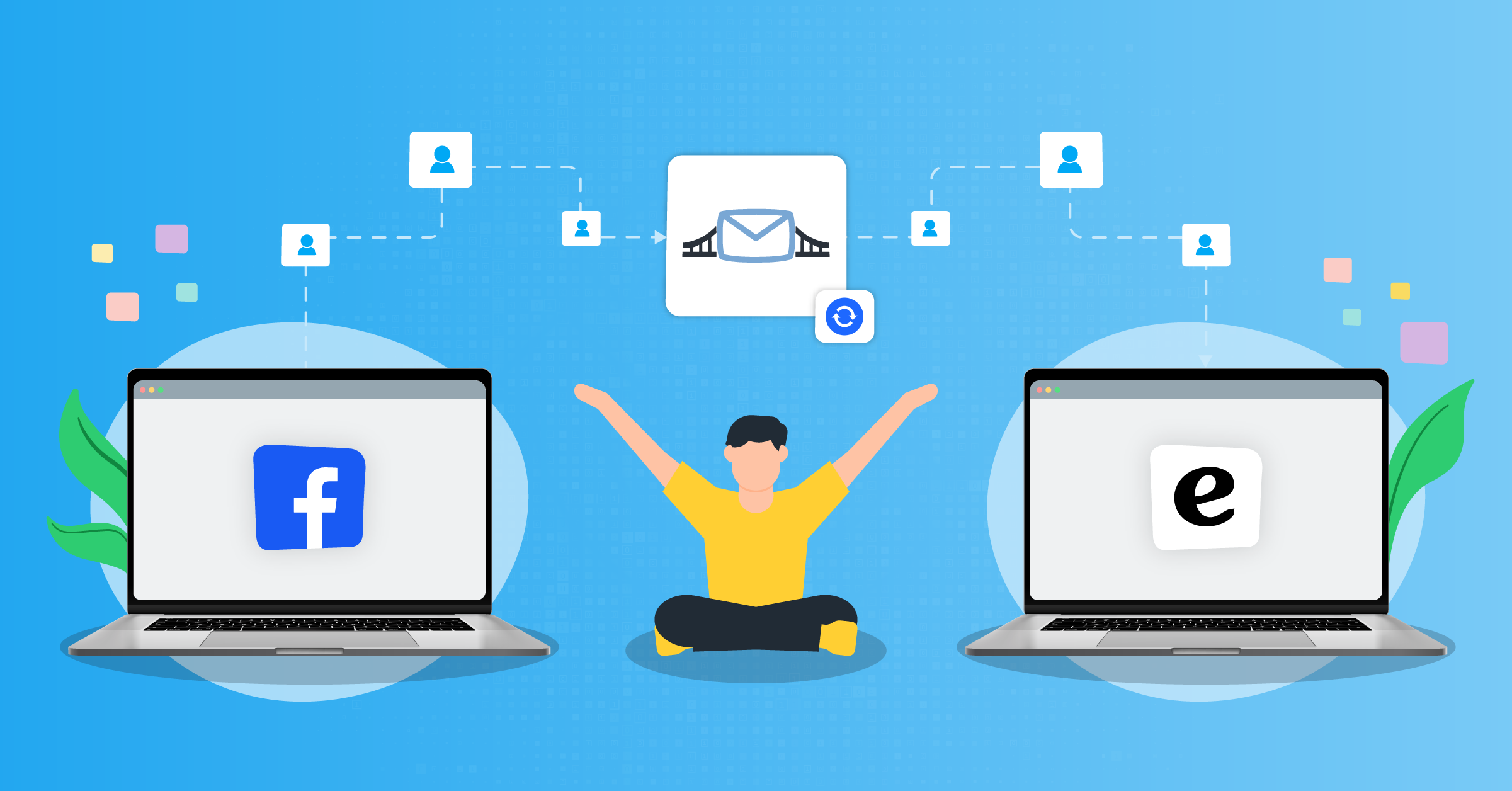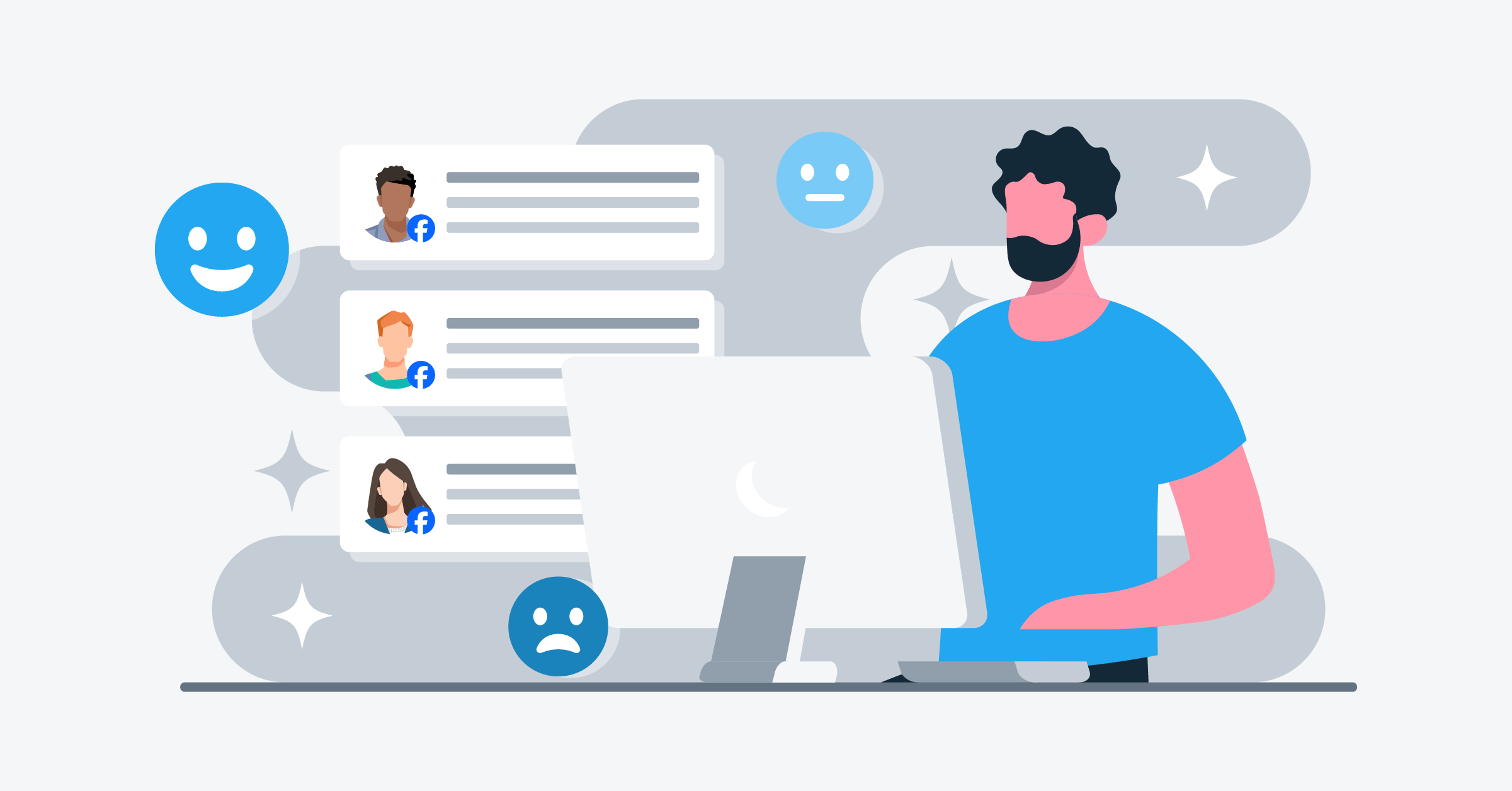
There’s no doubt about the advantages Facebook ads can have for many businesses in reaching their target audience. However, their success varies widely from one company to another.
Why? Because many businesses struggle to fully understand and use Facebook’s advertising potential.
As with any marketing tactic, a structured, strategic approach is fundamental. That’s why creating a well-designed Facebook ads funnel is so important.
In this article, we’ll discuss all you need to know about how to create a Facebook ads funnel that both captures attention and converts prospects into customers. Also, we’ll talk about tools and integrations that help you do that.
What is a Facebook ad funnel?
A Facebook sales funnel is a process that leads Facebook users step by step toward making a purchase. It’s like a guide that helps turn Facebook visitors into customers, focusing specifically on converting them directly through Facebook.
In other words, it’s part of a paid ad strategy where you create different Facebook ads for each step of the customer journey: to get their attention, then to get them to buy, and hopefully, to keep them coming back for more.
What is a Facebook ads funnel strategy?
Building a Facebook ads funnel is a systematic approach for brands to tap into Facebook’s massive user base. However, creating an effective Facebook ads funnel strategy goes beyond just making sales.
It typically takes around eight interactions (or marketing touches) with potential customers before they finally decide on a purchase. This shows why it’s important to closely monitor how people engage with their ads at each funnel stage.
We could say that it’s a tool for discovering which products or messages resonate best with your target audience. The key is to consider your users’ experience at each stage of the funnel.
It means that instead of a sales-first approach, your main mission will be to keep your audience engaged, and the sales naturally follow. Achieving this needs a balanced mix of creativity, strategic thinking, and technology.
Key stages of a Facebook ads funnel & their objectives
You can view a sales funnel as a linear process, like a pyramid. Or take it as a cyclical, interconnected wheel. Regardless of how you look at it, a sales funnel is made up of stages that create a process.
These stages are what guide potential customers through different steps toward a specific conversion goal, which in this case is making a purchase.

1. Awareness (TOFU – Top of the Funnel) stage:
This is where you create visibility for your product among users who are Not familiar with it.
You’ll introduce your brand and generate initial interest in your offering. You may even use this stage to educate the audience if you’re offering them an uncommon product or service.
2. Consideration (MOFU – Middle of the Funnel) stage:
The middle funnel is where you nurture users who have shown interest in your product. Here, your CTAs (call-to-action) can be more action-oriented. For example, send users to your website for a deeper exploration of your offering.
Additionally, your audience in this stage is more receptive to campaigns that present them with detailed information or communications that build trust and relationships.
3. Conversion/Decision (BOFU – Bottom of Funnel):
The bottom-of-funnel Facebook ads target users who know your brand, have already shown genuine interest, and are ready to take action. Conversion campaigns aim to display compelling ads that promote the campaign’s final goal, such as making a purchase.

How to create a Facebook ads funnel: A step-by-step guide
1. Outline your target audience
Successful marketing starts with a dialogue with the right audience. You’ll need to identify your brand’s target audience based on demographics, geography, and psychographics. Then, create buyer personas that help you tailor your content to their specific preferences.

2. Set up a marketing plan
You are well aware of your marketing objectives and know your target audience. Now, it’s time to develop a plan with three primary buying cycle stages: Awareness, Consideration, and Conversion.
You may also add a “bonus stage” here for retention, which encourages repeat purchases or subscriptions.
3. Create high-quality content for each stage
Content is an essential part of any marketing strategy. And when it comes to Facebook ads’ funnels, you’ll need nothing short of segmented and high-quality content.
Content ideas for top-of-funnel Facebook ads
- Organic TOFU content ideas
This type of content should highlight your brand values and product benefits. It can focus on products, services, and new launches. For example, you can introduce the team or share photos of company events.
- Paid TOFU content ideas
Running awareness campaigns allows you to show your ads to people who are most likely to be interested in them. Remember to use engagement objectives to get more shares, likes, and comments on your ads and posts, and boost video views.
Best top-of-funnel Facebook ads characteristic (with example)
Top-of-funnel Facebook ads work best when they focus on brand awareness and engagement instead of being salesy. They use:
- Eye-catching visuals
- Short and simple copy
- A clear message about your brand’s value.
You can use these ads to tell a story or highlight a common problem. This can be an emotional bridge between your brand and your audience while showing why they should follow your brand. This helps build trust and sets the stage for deeper engagement later on.
An example of the best top-of-funnel Facebook ads is The Cherrington Method campaign. The ad has all the above characteristics while offering a hard-to-refuse lead magnet.

Once clicked, users are taken to a form where they leave their contact in return for the promised strategy.

Content ideas for middle-of-funnel Facebook ads
- Organic MOFU content ideas
This can be content that communicates comparisons and case studies or provides social proof and client spotlights. It could also aim for a more direct encouragement for user involvement, such as a DM call-to-action.
Using remarketing content to warm up a cold audience is a go-to strategy when it comes to the consideration stage. It’s mostly about re-exposing individuals to your brand via different venues in order to increase familiarity and engagement and eventually move them toward conversion.
- Paid MOFU content ideas
The best content for the nurturing stage is one that offers value, such as lead magnets (white papers, guides). To top that off, run ads that drive prospects to webinars or offline events. For example, lead ads can help create campaigns that get attendees’ details for your upcoming webinar.
Middle-of-funnel Facebook ads characteristics (with an example)
Mid-funnel Facebook ads are relevant when they encourage deeper engagement. By this point, people already know who you are, so your ads should focus on why your product or service is the right choice.
Use things like customer testimonials, product demos, or special offers to highlight value. This helps potential customers learn more and feel confident about moving closer to a purchase.
An example of the best middle-of-funnel Facebook ads is Gray Wolf Montessori‘s open-doors campaign, which is an example of a special offer.

Content ideas for bottom-of-funnel Facebook ads
- Organic BOFU content ideas
Any content that points users to product pages, sales pages, or trials is considered bottom-funnel content. It usually contains offers, discounts, or limited-time promotions.
- Paid BOFU content ideas
Your ad copy should convey a sense of urgency or necessity to take action. Additionally, you can leverage custom audiences to create retargeting campaigns and improve your BOFU ads’ performance.
Content ideas for the retention stage
- Organic content ideas for retention campaigns
Users tend to trust user-generated content (UGC) more than content created by the brand itself. So there’s nothing like UGC when it comes to fostering trust. These could be images, videos, reviews, testimonials, or even podcasts.
Another approach is to encourage loyalty by reposting positive customer experiences. Most people refer to a brand’s testimonials before making a purchase decision.
- Paid content ideas for retention
Retargeting ads perform way better than your regular display banners, which is about a 10 times higher average click-through rate (CTR). Design Facebook Catalog ads for retargeting in order to upsell and cross-sell your products to your customers.
Creating automated Lookalike Audiences is another way to upscale your targeting’s precision. Discover all you need to know about paid ad funnels here.
Bottom-of-funnel Facebook ads characteristics (with example)
Bottom-of-funnel Facebook ads are direct and focus on conversions and sales.
At this stage, your audience is Marketing Qualified Leads (MQLs) and Sales Qualified Leads (SQLs). These are the people who already know your brand and are close to buying.
Highlight clear calls to action, special offers, or limited-time deals to create urgency. Retargeting also falls under this category. For instance, creating special offer ads for people who have visited your website or added items to their cart.
One of the best middle-of-funnel Facebook ads is done by The Exercise Coach Avon. Take a look at it here.

4. Build a funnel-focused toolset
Here are some must-have tools you’ll need for each stage of your Facebook ads funnel:
The suite of tools for the Awareness stage (TOFU)
The best place to start is your Meta Ads Manager, where you can create and manage your ad campaigns. In recent years, Facebook has adapted its platform to improve the experience of both users and advertisers.
This includes more refined ad objective categories, features to run laser-sharp audience targeting campaigns, and detailed insights into your ads’ performance.
Facebook lead ads
Lead ads are designed to help you expand reach and engagement with minimum effort. However, you’ll need to keep your lead ads optimized if you want to achieve high-converting campaigns.
For instance, use an appropriate ad copy that aligns with your content and the stage it is targeting to your audience. Keep in mind to track your content’s metrics so you can promote your best-performing content to a warm audience.
Learn more about lead ads integrations for your marketing campaign here.
The suite of tools for the Consideration stage (MOFU)
Meta Pixel
Installing Facebook Pixel helps you track the interactions on your website and actions from Facebook traffic. This way, you can better understand your user behavior and optimize your ad targeting for more convertible engagement and messaging.
Email & SMS marketing
Speaking of communications, integrating third-party Email or SMS marketing tools lets you create comprehensive lead nurturing campaigns. Timely responses build a deeper connection with potential customers.
In addition to welcome emails and sending an occasional offer, your emails can provide your audience with valuable information and content that guide them toward a conversion decision.
The suite of tools for the Conversion stage (BOFU)
Prompting potential customers to make a purchase or sign up for a service takes place in the conversion stage. But it doesn’t end there.
You’ll need to track conversions to analyze and optimize the effectiveness. These insights also show how your advertising efforts drive actual sales or conversions.
Conversions API
This tool is used in both the consideration and conversion stages. Conversions API allows you to send customer interactions and events directly to Facebook’s servers.
It acts as a data bridge for reporting events that occur on your website or app_ essentially anything outside of the standard tracking abilities of the Facebook Pixel.
Again, you’ll need to connect your database to Facebook in order to create a seamless connection.
Conversion leads performance goal
Conversion leads performance goal (previously Facebook Conversion leads optimization feature) is used in the “Conversion” stage of the ad funnel to optimize ad campaigns.
It helps you show your ad to audiences with a better focus and encourage and track conversions, such as sign-ups, purchases, or other desired actions.
Remember, you’ll need to have already implemented Conversions API and a running lead ads campaign before you can fully use this option.
Custom audiences
This is a valuable tool throughout the entire sales funnel. It enables precise targeting and helps you to tailor your ad copy to different audience segments based on their interactions with your brand.
- Lookalike audiences in the awareness stage: Expanding your reach to potential customers who are likely to be interested in your brand.
- Custom audiences in the consideration stage: Building custom audiences of people who have engaged with your content and are warm enough to consider your products or services.
- Website custom audiences in the conversion stage: Showing ads to users who have shown interest in your products but haven’t made a purchase.
- Customer List Audiences in the post-conversion stage: Engaging with and retaining your current customer base, and encouraging repeat purchases or brand loyalty.
To furnish Facebook with this data, you’ll need to connect it to your CRM (or other databases like autoresponder tools) via an official Meta Business Partner such as LeadsBridge.
5. Engage with your audience
Considering the funnel stage, engage with your audience through messaging apps and personalized interactions. Also, use features like Facebook saved replies and instant replies for better communication.

6. Offer incentives in return for conversions
One way to drive purchases is by directing the warm audience to product pages where they are shown discounts and limited-time offers. You can also promote these posts to other audiences (in your consideration segment) to increase conversions.
7. Work on customer retention
A sale or subscription is not the end of your leads’ cycle. You’ll need to keep the dialogue going by implementing strategies for customer retention, including:
- Repeat purchases
- Upselling
- Referral programs.
What’s more, you can create ad campaigns based on purchase history to encourage upselling and repeat purchases.
8. Perform Facebook ad funnel tracking
Facebook ads funnel tracking is about capturing all the important actions your customers take on your website. Here’s what you need in your toolkit to do this.
However, you’ll need first to install the Meta Pixel on your website. This lets you see these actions, or “conversions,” in Meta Ads Manager and Events Manager.
- Track standard events
Standard events are specific actions like “Purchase,” “Add to Cart,” or “Complete Registration.” These are predefined by Facebook and are easy to set up. For example, if you want to track when someone makes a purchase, you’ll use a code. This code can be placed on the confirmation page after a purchase is completed.
- Track custom events
If you need to track something unique to your business, you can create custom events. For example, you want to track when someone shares your product to get a discount.
Custom events allow you to define actions that aren’t covered by standard events. Here, you’ll need to run some codes as well.
- Use custom conversions
It’s often easier to track conversions based on specific URLs, like a “Thank You” page. Custom conversions allow you to track actions without adding extra code. You simply tell Facebook to track when someone lands on a page with a certain URL, like “/thank-you,” and it’ll automatically track that as a conversion.
- Implement Conversions API
Conversions API is an advanced way of tracking conversions. While the Pixel tracks actions on your website, this feature allows you to track actions happening off-site, like purchases made through your CRM or in-store.
It’s useful for getting a fuller picture of your customer’s journey.
To set up Conversions API, you’ll usually need to work with your well-versed developers. Alternatively, you can use platforms like LeadsBridge to integrate your CRM with Facebook.
This way, you can transfer data directly and automatically to and from Meta, even if the customer isn’t on your website when they convert.
After setting up tracking, regularly check your data in Meta Ads Manager and Events Manager. Look at how different parts of your funnel are performing, and use this information to optimize your ads and improve your conversion rates.
Facebook ad funnel examples
Now, let’s take a look at some Facebook ad funnel examples in action:
Cuts
Cuts is a minimalistic fashion outlet that uses a straightforward 6-page sales funnel. Their Facebook ad campaign phrase directs users straight to the ecommerce store, bypassing a landing page.

Additionally, they’ve used a 15% discount popup call for phone number submission. This helps them integrate a multi-channel lead nurturing strategy through email and SMS marketing.
GetResponse
GetResponse, the famous email marketing software, created a unique Facebook ad funnel example. The ad highlights GetResponse’s popup feature that takes the clickers to an informative landing page with trial prompts and more details about the popup.

Once a user signs up for the trial, they receive a series of non-salesy emails. The content strategy was to educate and encourage upgrades with CTAs that direct them to the pricing page for plan selection.
UNTUCKit
UNTUCKit effectively leverages a Facebook ads funnel for ecommerce by using carousel retargeting ads aimed at bottom-of-funnel prospects such as cart abandoners and recent website visitors.
These ads feature limited-time offers like discount codes and free shipping to incentivize conversions.
UNTUCKit’s ad offers a tailored copy that communicates urgency and value to its audience. This technique is known to increase the likelihood of closing warm leads, especially in a Facebook ads funnel for ecommerce businesses.
The company here aims to strengthen the final stage of its Facebook sales funnel and help recover high-intent traffic.
Facebook ads funnel optimization with LeadsBridge

There are many valuable tools for each stage of the funnel. However, the best way to optimize your Facebook ads funnel is by integrating tools with your marketing stack. LeadsBridge offers easy integration of lead ads, custom audiences, Conversion leads performance goal, and Conversions API.
Automation is key to conversion funnel optimization. LeadsBridge simplifies your data management processes through integrations you can create with just a few clicks. All while eliminating the need for CSV file handling and improving your ad performance.
Final takeaways
Building a successful Facebook sales funnel is all about tailoring your approach to suit your brand’s unique audience. What works for your competitors’ businesses might not work for yours.
So, it’s important to test different aspects of your strategies, research the market, and test out different tools. This means finding anything that helps pinpoint what aligns with your brand’s character.
Nevertheless, there are best practices that can give an edge to your marketing despite your objectives. For example, streamlining your workflows and helping your team to become more productive. Implementing automation is the foundation of modern marketing that helps you achieve productivity, efficiency, and more.
Ready to optimize your Facebook ads funnel strategy for success? Find the perfect integration with the Facebook suite of tools here.





















